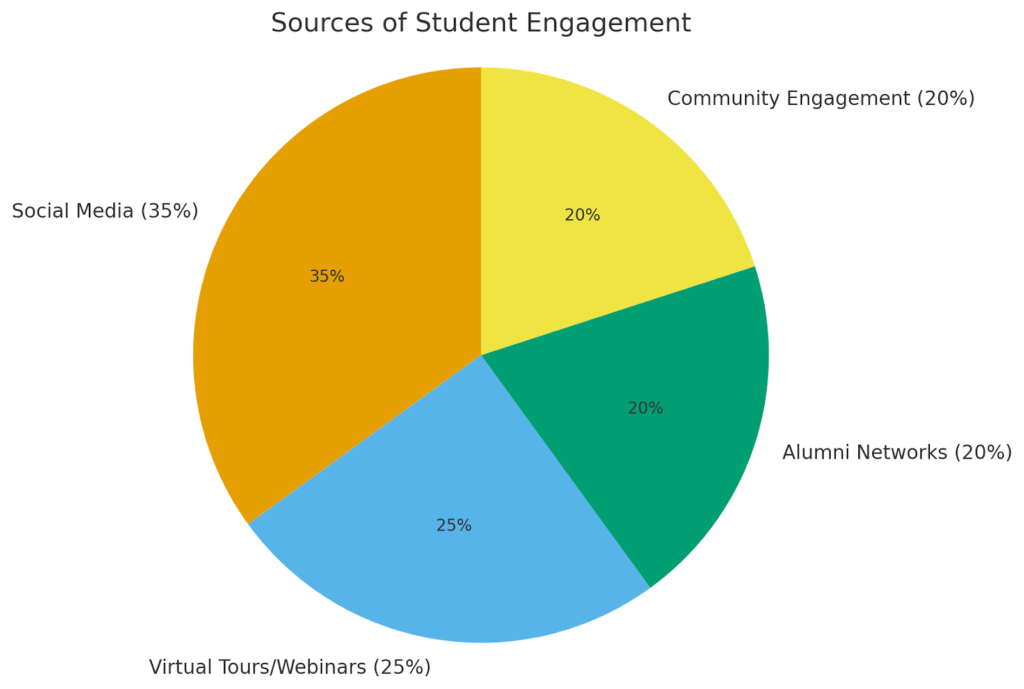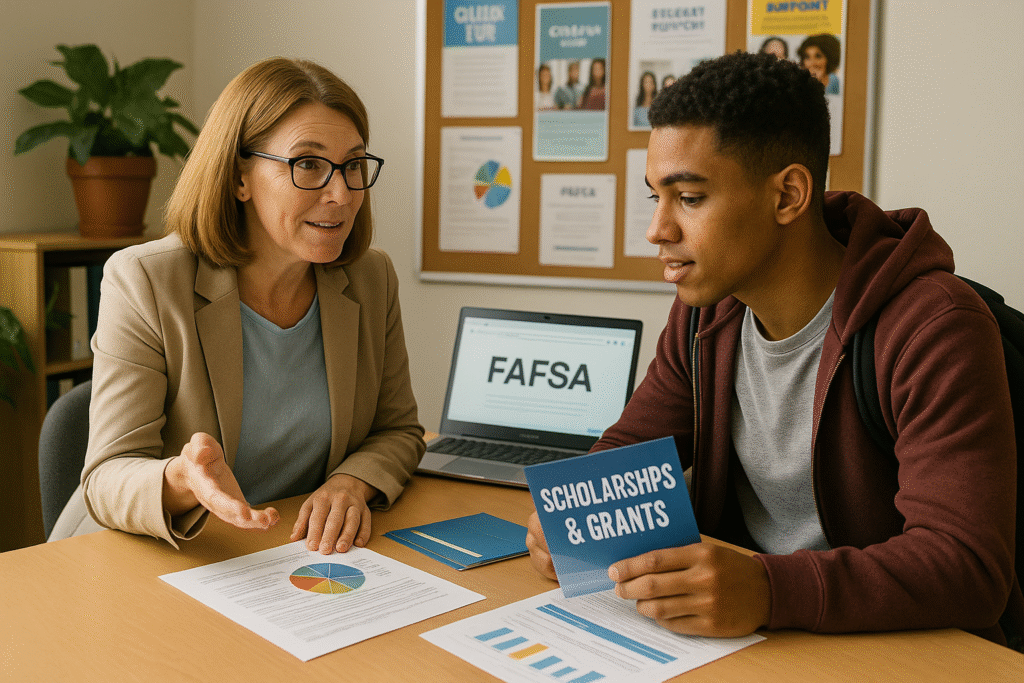Prologue
Recruitment strategies for higher education became more avant-garde as the competition among colleges and universities for diverse prospective students intensity it leads to the fact that the traditional recruitment methods printed brochures and local career fairs are still indispensable, but the higher education industry’s aid from the internet and other is become more stronger it depends mainly on such technologies as digital engagement, predictive analytics, and content without doubt that shows .Traditional recruitment methods like printed brochures and local career fairs remain important, but higher education marketing today is more dependable on digital engagement, predictive analytics, and authentic content that demonstrate value. Whether targeting adult learners, nontraditional and traditional goals of high school graduates, higher education institutions have to adapt to the different way of doing it.Logging and the heavy truck sectors are other storage of this change. As a way of example, a transport company that offers a real-time software package that includes video interviews and predictive analytics does not, or always does not, have a problem finding safe and reliable drivers. In this way, the company does not, or he/she does not have to apply high education training programs but should believe that a combination of digital engagement, a personal connection, and community participation are the key factors to success.

Digital Engagement and Personalized Outreach
Utilizing Social Media Platforms
Today, the marketing of educational institutions through social networks is the heart of higher education. Applications of social media such as Instagram reels, TikTok stories, and LinkedIn posts can be utilized to show authentic and mainly student-generated material and alumni success stories. This not only boosts student engagement but, at the same time, helps build the brand of employers by presenting their career outcomes, alumni networks, and collaborations with industries.
Referral programs and peer-to-peer recruitment can also be rooted in social media. Moreover, student ambassadors can share digital experiences of campus visits, hybrid events, and online forums to influence prospective students. Through interactivity like games or polls, higher education institutions enhance the entire process of enrollment.
Implementing Virtual Tours and Webinars
The use of the virtual campus tours and webinars as important recruitment tools has led to their growth. Students who cannot make campus visits can attend virtually replicated hyper-real digital events. The webinars allow faculty participation, peer-to-peer recruitment, and Q&A sessions wherein students can engage directly with the professors or be part of the alumni networks.
These tools are especially for online education programs and flexible learning options. Nontraditional students and adult learners needing accelerated programs are the ones who benefit most from the availability of virtual campus tours and hybrid events which are part of modern recruitment strategies.
Campus Virtual Tour | Visit the University of North Dakota
Data-Driven Recruitment Strategies
Utilizing CRM Systems and Predictive Analytics
CRM systems are crucial for the successful recruitment of students in the present day. They help in establishing close ties with the applicants by tracking the applicant’s progress through the electronic applicant tracking system and generating valuable data analytics. Through the predictive analytics, the higher education institutions become more capable to define which of the prospects have the higher probability of admission.
The CRM systems also include the functions in hosting virtual events, online forums, and video interviews, thus creating a single point of digital engagement. Similar to the field of logistics, predictive analytics in the realm of enrollment can be used to determine when programs will be over-subscribed.
Revolutionizing Student Retention: Predictive Analytics for Proactive Academic Advising
Personalizing Communication with Prospective Students
In the current world, communication that is individualized is not just a mere extra it is a must and an obligation. Students who think of studying in a particular school tend to interact more with the real-life success stories of the alum, results of the career prospects, and student-generated content that is relevant to their particular interests. As an example, the way of personalized communication consists of emails, chatbots, online forums, or even video interviews wherein student ambassadors are involved.
These categories among others serve the relationship building and the engagement of students by demonstrating a focus on their individual needs. Along the same lines, nontraditional students can be educated on the various avenues they can take like learning about participative programs, career fairs that fit their needs, and so on.
Financial Aid and Scholarships
Creating Well-Designed Financial Aid Packages
Financial resources are the strongest tools in an educational institution’s recruitment armory. Designing total rewards offerings that incorporate tuition discounts, scholarships, and flexible learning options can make institutions more attractive. This is a strategy that other sectors use to retain talent whereby they provide bonuses or referral schemes that are backed by the employees colleges can do the same thing with the help of robust financial aid initiatives.
Such packages should encompass all the advantages that the students would gain from it such as professional courses, enriched enrollment, and specific job placements. Games can be added to them, such as competitions for scholarships or referral programs that are tied to scholarships.
Marketing Scholarships to Target Populations
It is essential to market scholarships strategically to the populations they are targeted at like adult learners, nontraditional students, or underrepresented groups. Social media strategies, authentic content, and digital experiences can spotlight scholarship opportunities. Alumni networks can also share success stories about how scholarships supported their career outcomes, which strengthens the connection between financial aid and real-world success.
Gamification, the promotion of scholarships should be in line with recruitment trends, emphasizing the support financial aid brings to flexible learning, online education, and fast tracking of programs.
Partnerships and Community Engagement
Working with High Schools and Counselors
The recruitment of students through high school partnerships is very necessary. Cooperation with the counselors of high schools allows the institutions to present their campus visits, career fairs, and authentic content. The student ambassadors have also been a useful tool in high schools where they directly promote the participation of the potential students thus enhancing the whole enrollment process.
The involvement of the faculty in high school partnerships illustrates the academic value that higher education institutions have, while the industry partnerships demonstrate the career outcomes. These measures help to ensure that recruitment strategies are relevant to the younger kids who are preparing for their college.
Connecting with Local Communities and Organizations
Engagement with the community has always been a solid recruitment strategy. The involvement of local organizations, nonprofits, and employers not only enhances the visibility the higher education institutions have in the society but strengthens them as well in their respective places. This relationship building with the business sector like logistics firms or fleet operations, demonstrates actual career outcomes of the programs showing the effect of collaboration.
The community-led engagement programs may take the form of career fairs, referral schemes, and hybrid events which serve to showcase employer branding. In addition, the networks of alumni may be included as authentic content that resonates with local students thus carrying alumni success stories.

Diversity and Inclusion in Recruitment
Creating a Climate of Inclusiveness on Campus
The construction of an inclusive campus is a prerequisite for drawing a diverse pool of candidates. The theme of diversity and inclusion should be prominent in the marketing campaigns of higher education. The true representation of the alumni, the student success stories, and the student-generated content that demonstrates different backgrounds is just a few examples of the way to go.
Peer-to-peer recruitment, faculty involvement, and student ambassadors from underrepresented groups show an institutional commitment to diversity. Through the messaging of inclusivity and engagement with the community, the institutions can reach a greater number of potential candidates.
3/2 Higher Education Webinar: Diversity, Equity, and Inclusion in College and University Admissions

Facilitating Unconscious Bias Training for Hiring Committees
Unconscious bias training is compulsory for hiring committees. Recruitment strategies in higher education continue to be fair, equitable, and inclusive if the training is provided. This training can be integrated with applicant tracking systems, recruitment analytics, and data analytics tools to ensure that bias is kept to a minimum during the enrollment experience.
The training of unconscious bias will help not only in making sure the recruitment strategies are in line with the institutional values but also in creating the brand that is an inclusive campus environment. For this reason, it is just as critical for higher education institutions as compliance training in logistics or semi-truck operations industries where safety and fairness are the driving factors.
In Closing
The successful recruitment strategies for higher education amount to a total package that encompasses the digital engagement, data-driven methods, financial aid, community engagement, and diversity initiatives. Social media platforms, virtual tours, webinars, CRM systems, and predictive analytics are the tools of robust recruitment, which is why they also positively affect both student engagement and enrollment experience.
The comparisons with other sectors are impressive. Just as the organizing of the applicant tracking systems, recruitment trends, and predictive analytics for the purpose of driver and dispatcher recruitment are not a choice but a necessity, so too the employment of the same methods in the area of higher education should not be treated differently.
The righteous student recruitment practice is about the binding of relationships, the parallel and personalized communication, and the positive career outcomes revealed through the networks of alumni and partnerships with industries. With respect to alumni success stories, flexible learning, and the accelerated programs, it is the higher education institutions that are able to maintain the competitive edge, draw nontraditional learners and cultivate an open campus. The use of such recruitment strategies will be the key to the continuity, adjustment, and the preparation of the students for the planned rewarding careers by higher education institutions.







